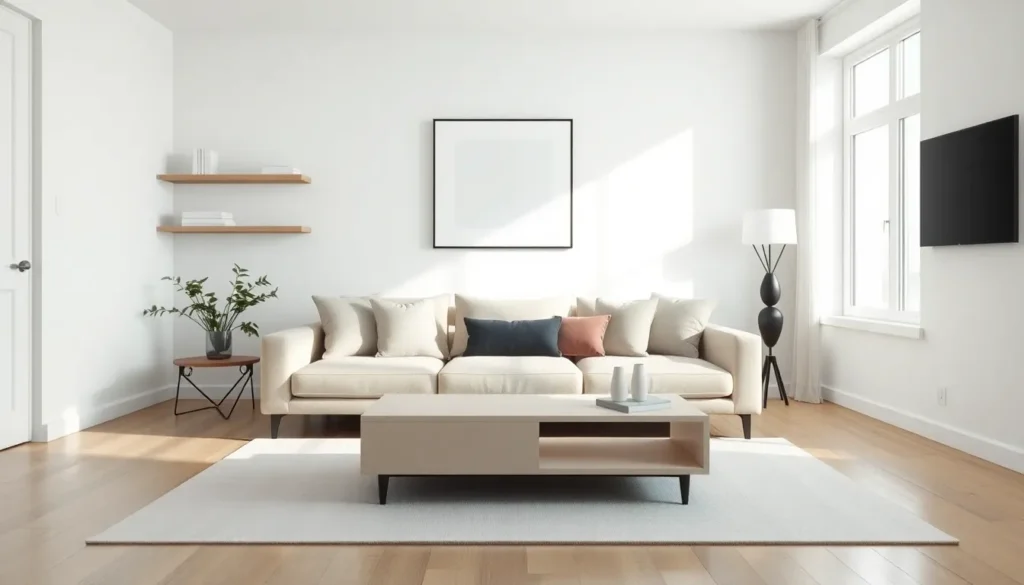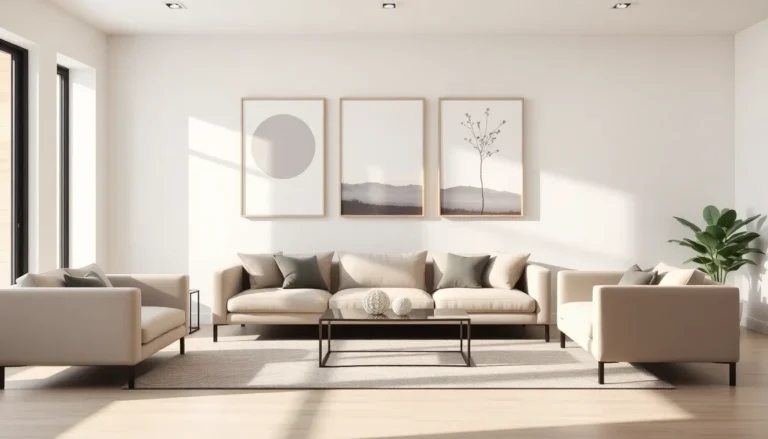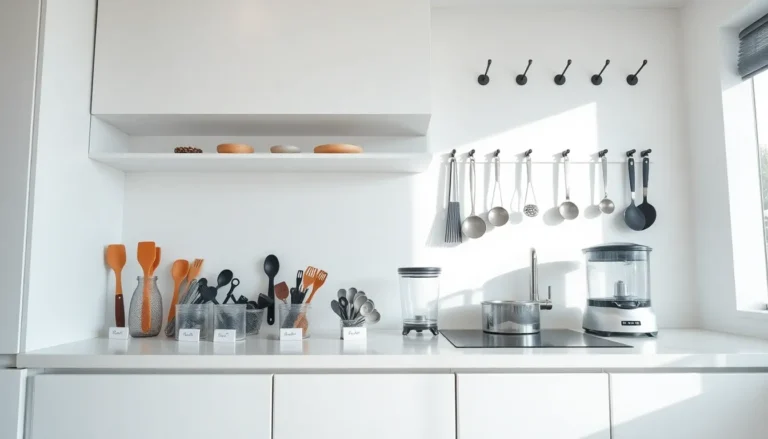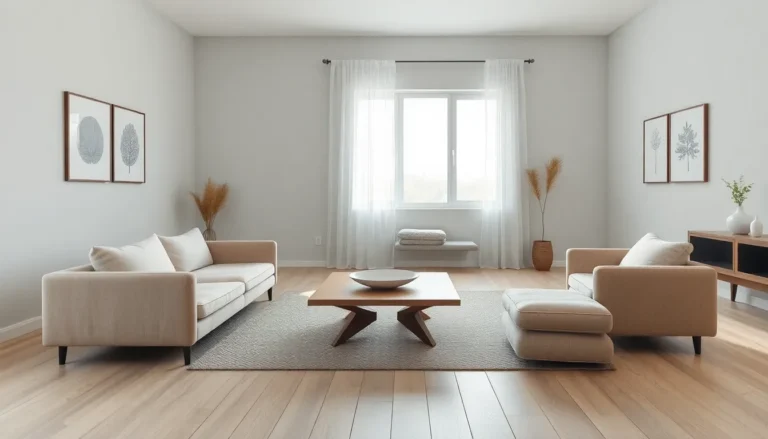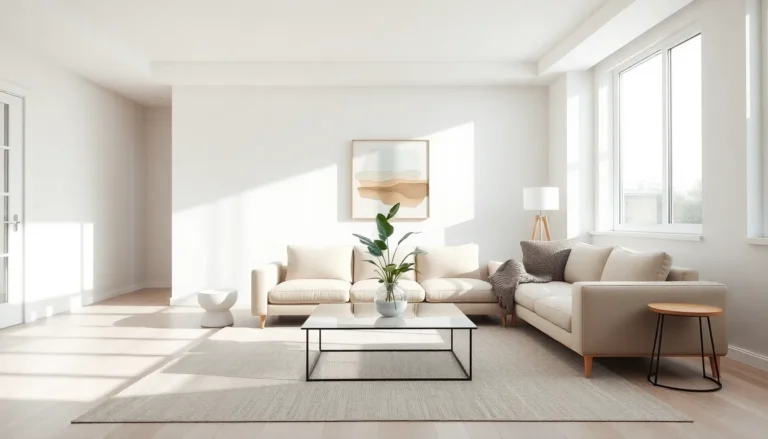Ever walked into a living room that felt like a breath of fresh air? That’s the magic of minimalist living room furniture. Imagine a space that whispers sophistication instead of shouting chaos. Minimalism isn’t just about owning fewer items: it’s about curating a lifestyle that says, ‘I appreciate beauty and functionality.’ If you’ve ever wondered how to transform your home into a serene sanctuary, welcome to the gentle world of minimalist design. Let’s immerse.
Table of Contents
ToggleUnderstanding Minimalism in Living Spaces
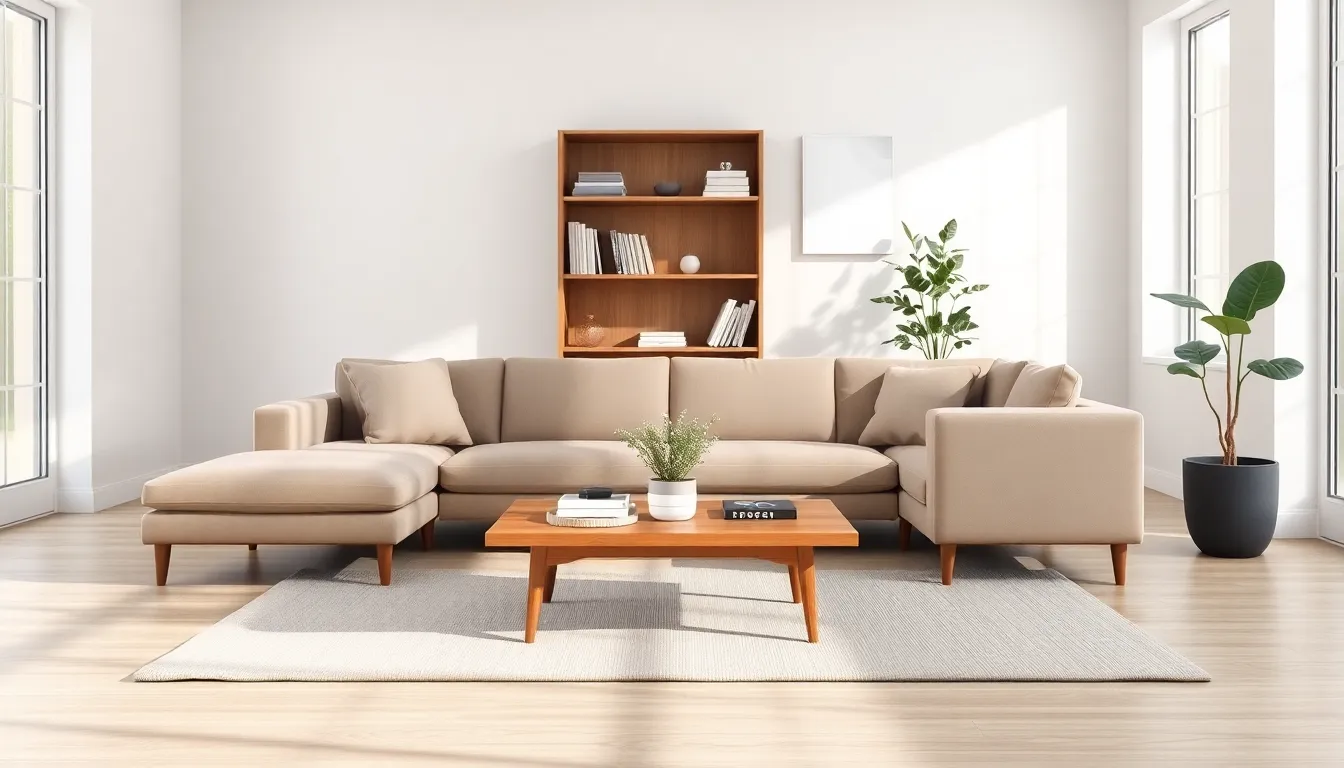
Key Principles of Minimalist Design
At its core, minimalist design revolves around simplicity and functionality. Picture a room where every piece serves a purpose, and extraneous clutter disappears. In minimalist spaces, less is indeed more. Key principles include:
- Functionality: Each piece of furniture should perform a function. If it doesn’t support your lifestyle, it doesn’t belong.
- Decluttering: Eliminate excess items. Think of it as a heartfelt goodbye to items that no longer spark joy or serve a need.
- Focus on Quality: Invest in well-crafted pieces that will stand the test of time. It’s wise to prioritize durability over quantity.
Benefits of a Minimalist Living Room
Transforming a living room into a minimalist haven offers myriad benefits. The reduction in clutter isn’t just visually appealing: it also contributes to mental clarity. A simplified space can
- Boost productivity: A clutter-free environment can help maintain focus.
- Create relaxation: Simplicity fosters a sense of peace, reducing distractions.
- Encourage creativity: With fewer items, your mind is free to think outside the box.
Choosing Furniture for a Minimalist Aesthetic
Essential Pieces for Minimalist Living Rooms
When furnishing a minimalist living room, aim for essential pieces that embody clean lines and functional design. Consider starting with:
- Sofas: Look for sleek designs with solid colors. A low-profile couch can ground a room without overpowering it.
- Coffee tables: Opt for tables that serve dual purposes like storage or extendable features.
- Shelving: Floating shelves can display treasured items without adding visual clutter.
Material and Color Considerations
The materials and colors you choose play a vital role in achieving a minimalist look. Stick to a neutral palette with occasional pops of color. Popular materials include:
- Wood: Natural wood provides warmth and texture, making designs more inviting.
- Metal: Incorporating metal accents can bring in a modern edge.
- Textiles: Soft textiles in muted tones can add comfort without overwhelming visuals.
How to Arrange Minimalist Furniture
Creating a Functional and Stylish Layout
Arranging furniture in a minimalist space requires careful consideration of function and flow. The goal is to create an inviting environment. Begin by:
- Ensuring sufficient space: Furniture should not be crammed together. Leave room for movement, which increases comfort.
- Creating focal points: Draw the eye towards a significant piece, whether it’s a unique chair or a stunning piece of art.
Maximizing Space with Minimalist Decor
Use decor strategically to enhance your minimalist living room. Instead of multiple decorative elements, select one or two striking accents. Consider:
- Large statement pieces: A single artwork can be more impactful than a gallery wall.
- Plants: A few well-placed plants can liven up the space and improve air quality.
Tips for Maintaining a Minimalist Living Room
Decluttering and Organizing Strategies
To keep a minimalist living room pristine, regular decluttering is essential. Set aside time each month to assess belongings. Strategies to maintain the minimal approach include:
- The one-in-one-out rule: For every new item brought in, one must be donated or discarded.
- Designated storage: Identify homes for all items, ensuring everything has a place.
Seasonal Updates for a Fresh Look
Minimalism doesn’t mean rigidity. Embrace seasonal changes through simple updates. A throw blanket in autumn colors or a spring floral arrangement can rejuvenate the room without cluttering it. Rotate decor items to keep the space feeling fresh and inviting.

